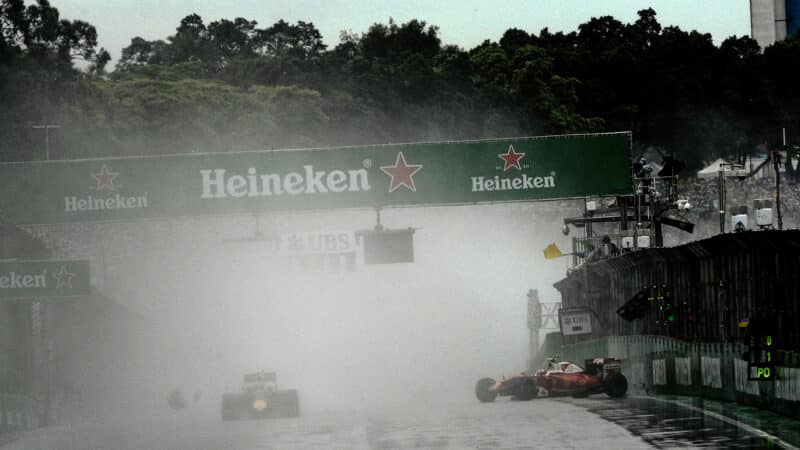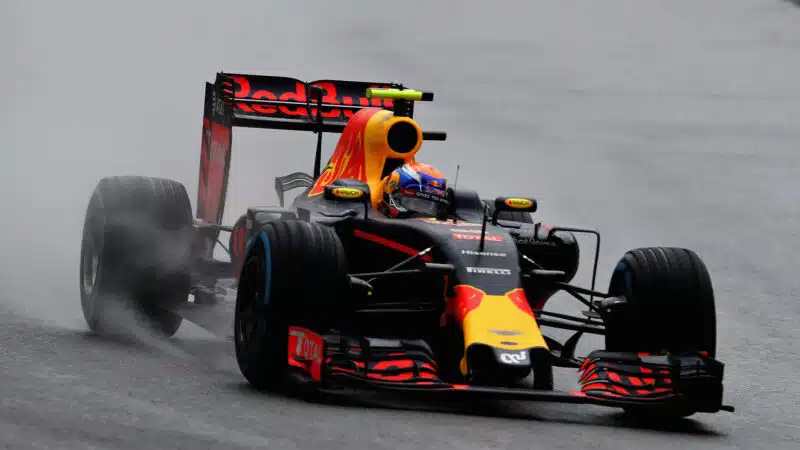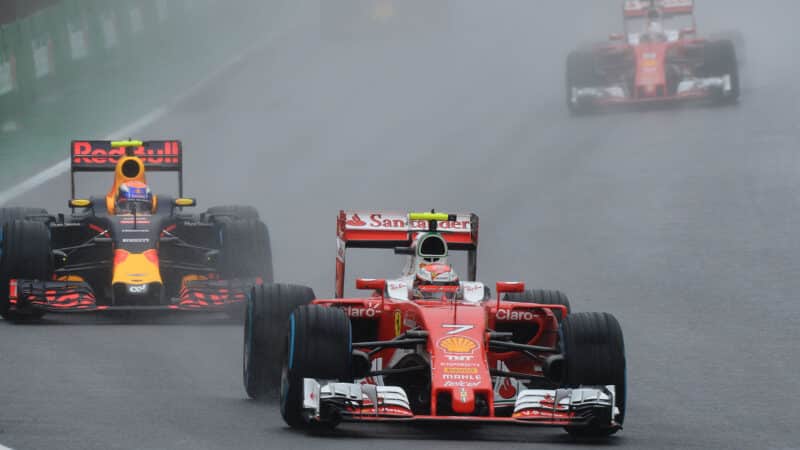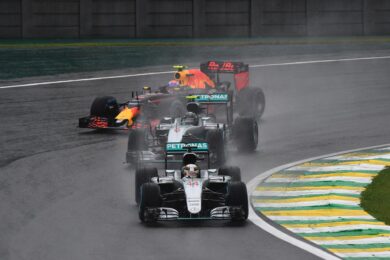There followed one of the sport’s most terrifying moments with Räikkönen sitting in his stationary car, at 180-degrees to the oncoming traffic, almost invisible to those drivers such was the level of spray. The rookie Esteban Ocon, travelling at almost 200mph in the Manor, was not aware there was a stationary Ferrari in the spray and was momentarily on course to hit it head-on. Raikkonen momentarily hunched down, waiting for the horrible inevitable – but in the last moment Ocon saw him and reacted just in time. Several others had been horrified as they’d passed close by, realising they’d just missed him only as they saw him, including Sebastian Vettel in the other Ferrari. F1 had just dodged a bullet and the race was red-flagged.
It got restarted behind the safety car, with everyone on wets and circulated like this for another seven laps. Race director Charlie Whiting then called another red flag after looking at the weather forecast. Rather than the event timing out, he reasoned that if he froze the countdown and waited for the worst of the rain to pass, we could get far more racing laps in than if they’d just ploughed on.
When racing finally did resume Verstappen was immediately on the attack, getting onto his favoured wet outside line through Turn 3 – longer but grippier in the wet – to get way more momentum than Rosberg and converting that into a pass for second into Turn 4. He used that exact same line to pass three cars on the opening lap last Sunday.

Ferrari’s Finnish driver smashes into the barriers – in the path of other cars
DPPI
For a couple of laps Verstappen began to nudge into Hamilton’s gap – which he’d got out to 2-3sec very quickly – but as soon as he was informed of this Hamilton just upped his pace by around 0.3sec, which seemed to kill off Verstappen’s challenge. A few laps later, trying again to close down Hamilton, Verstappen hit that standing water at the top of the hill, the Red Bull getting broadside at enormous speed. Here’s how we described it that day:
“He’d got the opposite lock on quickly enough to prevent a full spin and was able to scrub its speed off still within the width of the track. As it headed towards the left-hand barrier, most of the sting had been taken out of the moment, and Verstappen calmly released the clutch and induced a small power slide to quickly change its trajectory away from the barrier. It lost him about four seconds – not quite enough for the following Rosberg to capitalise, Nico looking for all the world like he was driving for the title and generally keeping away from other cars. On the following lap Verstappen was a full one second faster than Rosberg…”
It was a remarkable bit of car control. But he clearly wasn’t going to be able to do anything about Hamilton. So with 28 laps to go, Red Bull gambled on bringing Max in for inters. It would lose him many places but if the rain reduced enough, as it looked like it might, then it could have won him the race. But the rain actually increased – and Verstappen was forced in again shortly afterwards for a change back to wets. On rubber newer than anyone else’s he was the fastest man on track and was passing cars as soon as he came upon them. In the space of 17 laps he overtook 11 cars, some of them in extremely unconventional places – up the inside of team-mate Ricciardo into the fast downhill of Turn 11, for example. It was an extraordinary performance and it netted him third place.





